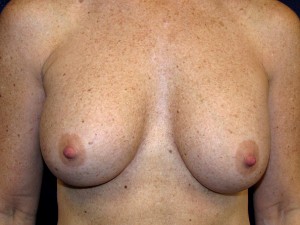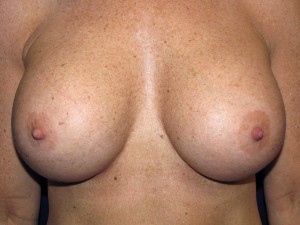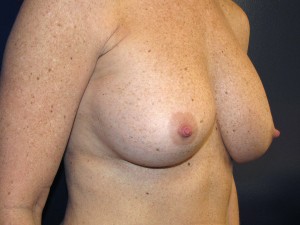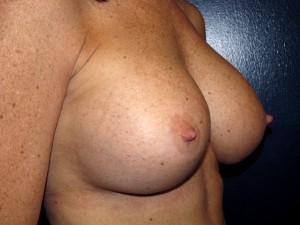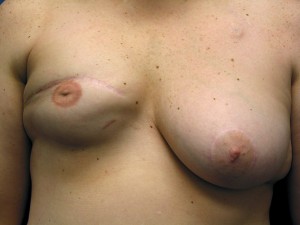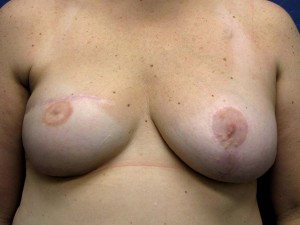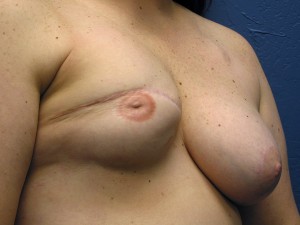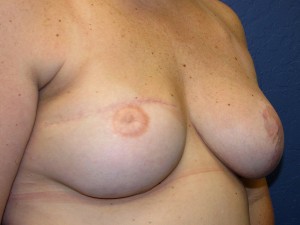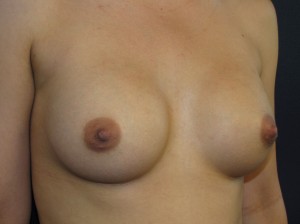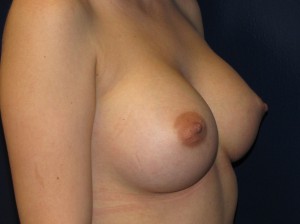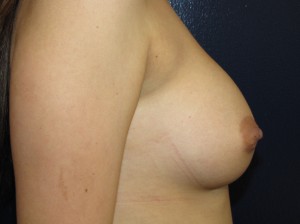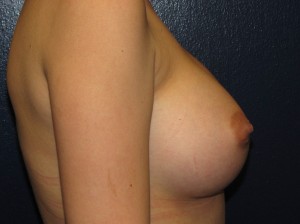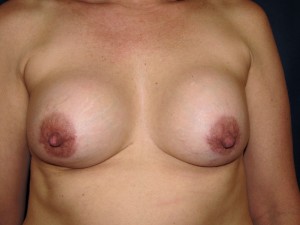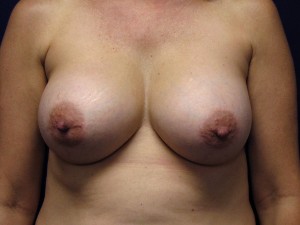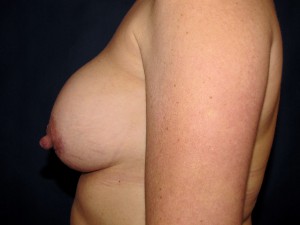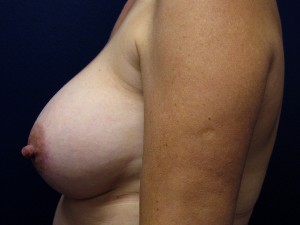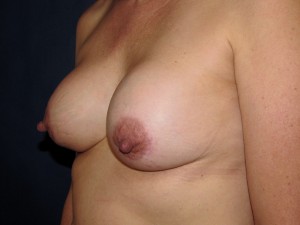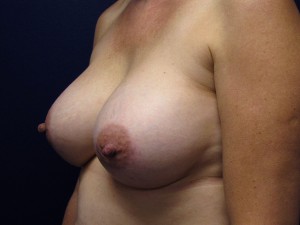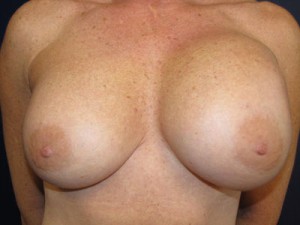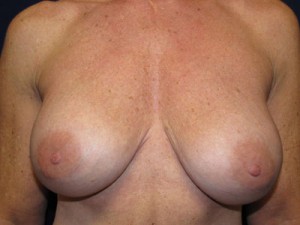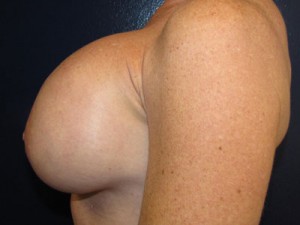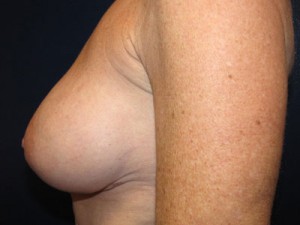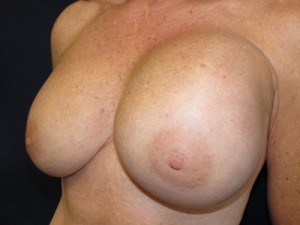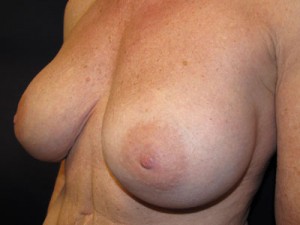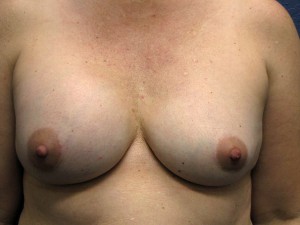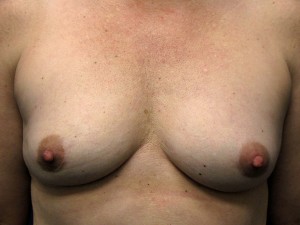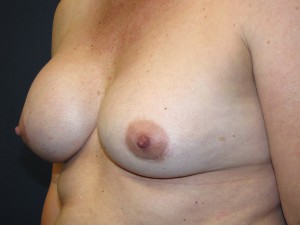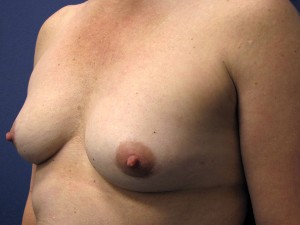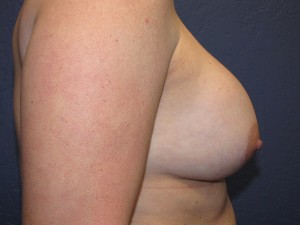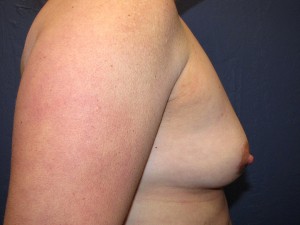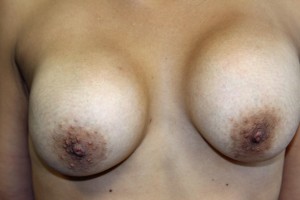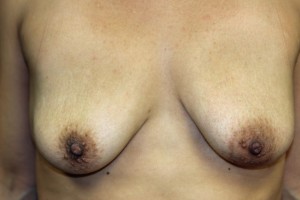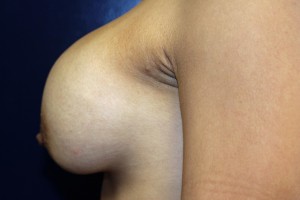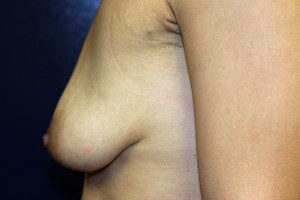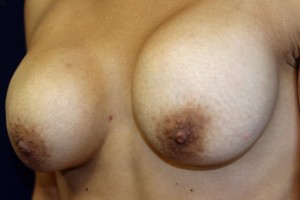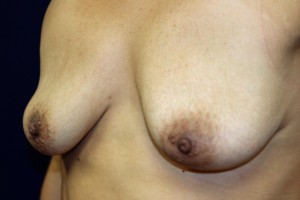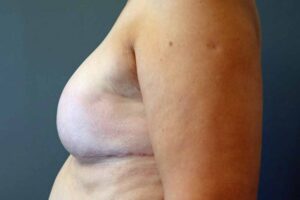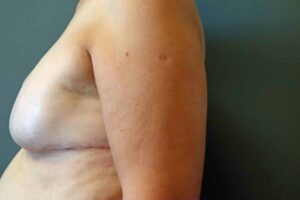Quick Facts About Breast Revision
- Principle Benefits: Addresses implant or other breast surgery-related concerns such as rupture, rippling, capsular contracture, sagging or dissatisfaction with size/shape; restores breast aesthetics and comfort
- Treatment Overview: Breast revision may commonly involve replacing implants, adjusting implant placement, removing implants with or without fat grafting or correcting complications from a previous breast lift or reduction
- Recovery Timeline: Most patients can resume light activities and non-strenuous work within 5-7 days; more intense physical activity, including heavy lifting, should be avoided for at least 3-4 weeks
- Average Cost:The cost varies based on the complexity of the procedure and whether new implants are placed; fees typically include the surgeon’s fee, anesthesia and facility costs. Dr. Turkeltaub and his team can provide a personalized prize quote following your consultation
 The vast majority of women who have undergone elective breast surgery—breast augmentation, breast lift and breast reduction—have been very highly satisfied with the results and would definitely make the same decision again. They share with us not just the obvious effects on appearance and markedly improved comfort with breast reduction but also the positive emotional and mental impacts. It is no wonder that breast augmentation usually ranks as the number one plastic surgery procedure selected by women or that the only regret that women have after having undergone a breast reduction is that “knowing what I know now, I should have done this years ago!” That said, sometimes the results of an initial breast procedure may need to be reversed, adjusted or otherwise improved upon for aesthetic, functional or health-related reasons. In these cases, a breast revision is needed.
The vast majority of women who have undergone elective breast surgery—breast augmentation, breast lift and breast reduction—have been very highly satisfied with the results and would definitely make the same decision again. They share with us not just the obvious effects on appearance and markedly improved comfort with breast reduction but also the positive emotional and mental impacts. It is no wonder that breast augmentation usually ranks as the number one plastic surgery procedure selected by women or that the only regret that women have after having undergone a breast reduction is that “knowing what I know now, I should have done this years ago!” That said, sometimes the results of an initial breast procedure may need to be reversed, adjusted or otherwise improved upon for aesthetic, functional or health-related reasons. In these cases, a breast revision is needed.
With well over thirty years of practice here in the Valley, Scottsdale plastic surgeon Steven H. Turkeltaub, MD has considerable breast revision experience addressing a broad range of issues. Although results can never be guaranteed, women have an increased possibility of realizing an optimal outcome by choosing a plastic surgeon who has the technical skill, experience, comprehension and appreciation of aesthetic principles.
- What is a Breast Revision?
- What are the Common Reasons for a Breast Revision?
- What Does the Breast Revision Procedure Involve?
- What Can I Expect in My Breast Revision Recovery?
- How Much Does Breast Revision Surgery Cost?
- Breast Revision Before-And-After-Photos
- Breast Revision Testimonials
What is a Breast Revision?
As with any surgical procedure, there are many factors that can impact the outcome of breast enhancement treatments—both short and long term. These can be physician, patient, device and time related. Inferiorly performed surgery or using flawed aesthetic considerations will lead to substandard results and an unhappy patient. Patient related factors include unmet expectations and misconceptions, genetics, non-compliance, health-related concerns and injury. Breast implants, particularly silicone ones, are durable devices and can potentially last a long time but not necessarily forever. Along with the passage of time are changes which usually are not for the better: stretching and thinning of the skin, significant weight gain (or rarely loss) with alteration of body proportions, implant rupture or deflation, and evolution of our tastes and goals.
For these and various other reasons, another surgical procedure later in time is a significant probability. These secondary procedures are collectively known as breast revisions.
What are the Common Reasons for a Breast Revision?
Some of the most common motivations for seeking breast revision surgery (secondary breast surgery) are:
- Size of the Breasts
- Asymmetry of the Breasts
- Changing From Saline to Silicone Implants (or vice versa)
- Implant Malposition
- Implant Pocket Configuration Issues
- Repositioning the Implants From Submammary to Submuscluar (or vice versa)
- Capsular Contracture
- Capsulectomy
- Implant Rupture
- Implant Removal
- Implant Induced Rippling of the Skin
- Skin Stretching
- Breast Drooping (ptosis)
- Breast Contour Issues
- Implant Flipping
- Nipple-Areola Issues
- Undesirable Scarring
- Infection
- Implant Exposure
- Breast Augmentation Revision Before-and-After Photos
- Breast Augmentation Revision Patient Testimonials
Size of the Breasts
The most common complaint associated with breast augmentation is that they were not made large enough. It is very rare, however, that they are felt to be far too large (this is often related to particular surgeons who have earned the reputation for using disproportionately oversized breast implants).
With time, it is not uncommon for many women to decide that they would like to be even bigger. However, there are also those who want to downsize for a variety of reasons.
In women who have undergone a breast reduction, postoperative concerns with size issues are not very common. Over the long term, weight gain, loss or fluctuation or continued growth of the breasts can impact the need or desire for a procedure later in time.
Due to social media policies, the following images have been censored. Please click on the button below to view the image.
- Before breast reconstruction revision (front view)*
- After breast revision*
- Before breast reconstruction revision (oblique view)*
- After breast revision*
*Individual Results May Vary
Asymmetry of the Breasts
The majority of women have some degree of breast asymmetry prior to surgery. This can include dissimilarities in breast size, shape and positioning as well as of the shape, size and vertical position of the nipple. Though there can be a reduction in differences between sides through breast revision surgery, the breasts will never be identical in appearance and other factors.
Due to social media policies, the following images have been censored. Please click on the button below to view the image.
-
Before breast reconstruction revision
(front view)*
- After breast revision*
-
Before breast reconstruction revision
(oblique view)*
- After breast revision*
*Individual Results May Vary
Changing From Saline to Silicone Implants (or vice versa)
Silicone breast implants simulate the consistency of breast tissue far superiorly and feel considerably more natural compared to saline implants. Furthermore, they are also much more durable, generally lasting substantially longer than saline implants.
The vast majority of women who request changing the type of implant that they have are going from saline to silicone. In my experience, it is very rare for a woman to want to switch from silicone to saline and it is usually not for aesthetic reasons.
Due to social media policies, the following images have been censored. Please click on the button below to view the image.
- Before – moderate profile smooth surfaced saline implants – oblique view*
- After – Very high profile and larger smooth surfaced silicone implants*
- Before – saline implant – side view*
- After – silicone breast implant – side view*
*Individual Results May Vary
Implants Malposition
Improper implant positioning (malposition) can be caused by such issues as anatomic asymmetries or lack of meticulousness in the placement of the implants. In relation to their ideal position, the implants might be situated too high, low or close together or too far apart. Their placement can also be asymmetrical.
Implant Pocket Configuration Issues
During breast augmentation surgery, a space (also called a pocket) is created either behind or in front of the pectoralis muscle in which the implants will be placed. These implant pockets can be made too large, small, high, low or close together or irregular. There can be either too much or not enough space between the breasts. When they are so over-dissected that the breasts become confluent, this is known as symmastia or a “uni-boob.” The implants can also be placed too low, not low enough or unevenly. With over-enlarged pockets, the implants may shift abnormally far to one side or the other when leaning and/or lying down.
Changing Implant Positioning from Submammary to Submuscular (or vice versa)
There are some general disadvantages of breast implants being situated in a submammary pocket (in front of the muscle) and some specific circumstances where the results are clearly inferior. By repositioning them behind the muscle (submuscular pocket), these issues can be addressed and with improved results.
The reverse can be performed though this is far less common.
Capsular Contracture
Capsular contracture is the condition where one or both breasts feel firmer than normal or even hard, sometimes painfully so. This situation is caused by the development of constricting scar tissue that forms around the implants resulting in breasts that not only feel hard but can also be deformed in appearance. The incidence of this was greater in the past for a variety of reasons and higher for implants positioned in front of the chest wall muscle (submammary) as compared to those positioned behind the muscle (submuscular). Capsular contracture was also more prevalent among older types of silicone implants versus the ones used today.
Fortunately, there are a variety of techniques and precautions that can be taken that have been shown to reduce the risk of this developing.
Due to social media policies, the following images have been censored. Please click on the button below to view the image.
- Before capsulectomy and implant exchange*
- After capsulectomy and implant exchange*
- Before breast revision surgery*
- After surgery*
- Before breast revision surgery*
- After surgery*
*Individual Results May Vary
Capsulectomy
The firm, deforming scar tissue that forms around breast implants resulting in capsular contracture can be removed by a procedure known as a capsulectomy. This is one of several indications and reasons for this to be performed. The removal of this tissue can be partial, total or en bloc (intact capsule along with contained implant).
Due to social media policies, the following images have been censored. Please click on the button below to view the image.
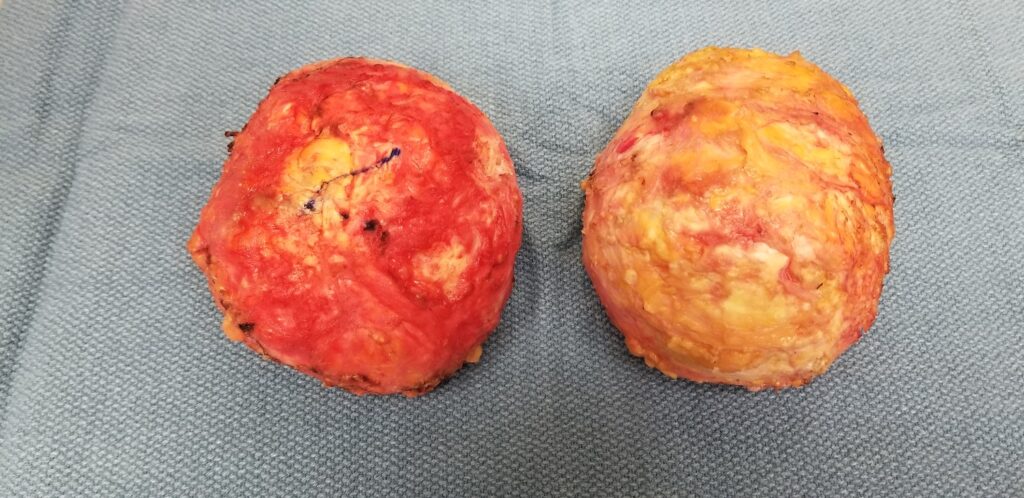
En Bloc Capsulectomy
*Individual Results May Vary
Implant Rupture
Although they can be quite durable, breast implants are not lifetime devices. As a result and given enough time, they will probably need to be replaced. They could last up to 30 or 40 years depending on a variety of factors. Overall, silicone implants last longer than saline implants will.
Due to social media policies, the following images have been censored. Please click on the button below to view the image.
- Before Bilateral ruptured breast implants with fluid accumulation on left side*
- After Bilateral ruptured breast implants with fluid accumulation on left side*
- Before Bilateral ruptured breast implants with fluid accumulation on left side*
- After removal of ruptured breast implants and placement of new silicone implants*
- Before Bilateral ruptured breast implants with fluid accumulation on left side*
- After removal of ruptured breast implants and placement of new silicone implants*
*Individual Results May Vary
Implant Removal
Once fairly uncommon but now far more popular, some women decide that they no longer need or desire having implants any longer so they have them removed via explantation surgery. This occurs both in women who had their implants placed for aesthetic reasons and in women who had breast reconstruction following treatment for breast cancer.
Due to social media policies, the following images have been censored. Please click on the button below to view the image.
- Before breast implant removal – (explantation)
- After removal of breast implant*
- Before implant removal*
- After surgery*
- Before implant removal*
- After surgery*
*Individual Results May Vary
More dramatic results from explantation:
- Before implant removal (explantation)*
- After explantation*
- Before implant removal*
- After implant removal*
- Before implant removal*
- After implant removal*
*Individual Results May Vary
Skin Rippling Induced by Implants
Implant-induced skin rippling is virtually always associated with saline implants. The incidence and severity is substantially greater in women who have thin skin, those with large or disproportionately large saline implants, and where the implants are in a submammary pocket (above the pectoralis muscle).
Skin Stretching
Due to a combination of decreased skin tone and elasticity along with the effects of gravity, women who have undergone a breast reduction can expect that there will be some deterioration of their breast shape over time as well as a continuation of drooping. These changes will be exacerbated by sizable weight gains or fluctuations, pregnancy, poor skin tone and by not wearing a supportive bra on a regular basis.
This is also true for women who have had a mastopexy with or without a breast augmentation. If there are large implants or they were placed above the muscle, stretching and thinning out of the skin along with breast drooping will occur.
Breast Drooping (Ptosis)
Breast drooping does also occur independent of any previous breast surgery. Factors such as gravity, weight fluctuations, pregnancy and genetics are the common culprits. This elongation and descent of the breast (ptosis) can be addressed surgically with a mastopexy (breast lift) to help lift and restore a more desirable contour.
Breast Contour Issues
The presence of abnormally shaped breasts in a woman who has had previous breast surgery can be due to numerous factors. These can be implant, time, congenital or genetics related or even as a consequence of non-ideal surgical technique, capsular contracture or weight issues.
Implant Flipping
Implant flipping is the condition where a breast implant flips over 180 degrees—like when one is cooking hamburgers. It has become a real issue with the latest generation of breast implants, especially the ultra-high profile ones, because they are highly cohesive, have a higher fill volume for any given size and are form stable. This means that they maintain much of their shape no matter what position they are in or what forces they are exposed to in the breast (photo A).
Previous generation implants were softer, retained little of their shape and molded to the tissues and forces so even if they flipped, there was little to no change in appearance. That is no longer the situation with the ultra-cohesive silicone breast implants as seen in this breast reconstruction patient’s left breast where the implant flipped—apparently while sleeping (photos B and C).
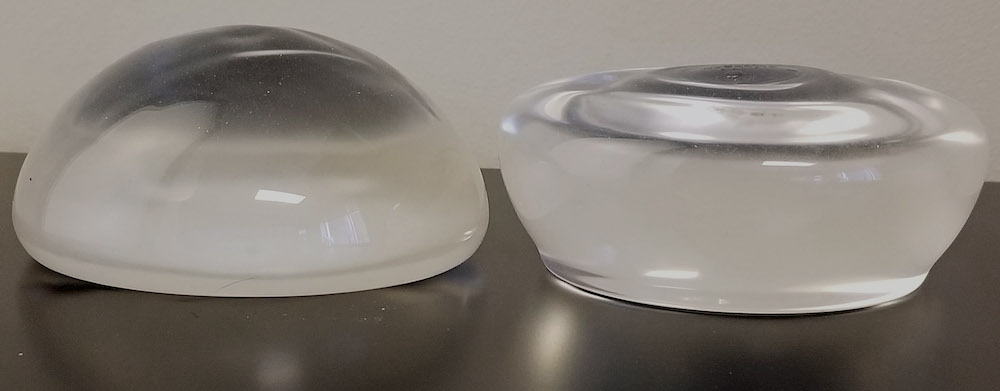
A. These two ultra-cohesive silicone breast implants are identical in size and configuration but the one on the right is flipped over 180 degrees. Note the substantial difference in shape with the flipped one having decreased projection with a very flat and broad “up” (outward facing) side.
- B. Flipped implant in left breast
- C. After manually un-flipping implant
Non-surgical implant manipulation can correct this problem. However, it very may well recur—sometimes quite frequently—at which point in time the patient elects to proceed with a definitive surgical correction. There are a few different options to consider.
Nipple-Areola Issues
The nipples and areolas (nipple-areola complexes) may be disproportionately large or small, situated too low or high, unevenly positioned or shaped, configured irregularly, inverted or over-projecting. These concerns can be genetic or post-surgical in nature.
Undesirable Scarring
Incisions can heal in a less than desirable fashion resulting in scarring that can be too wide, dark or painful. Scar revision and/or additional methods may be able to improve the final appearance of scarring.
Infection
Infections following breast surgery are relatively rare and may require surgical intervention. When this occurs in the presence of implants, then they may need to be either temporarily or permanently removed.
Implant Exposure
Implant exposure is where the implant is exposed to the outside due to either an area of skin breakdown or because of wound separation. This rare problem can be the result of breast infections, very large and “inappropriately” sized implants and breasts that have been previously exposed to radiation as part of breast cancer treatment.
What Does the Breast Revision Procedure Involve?
The breast revision procedure is customized to each patient based on their needs or desires. The precise details of treatment will depend on several factors, including:
- The initial procedure performed (breast lift, reduction or augmentation)
- The concern being addressed
- Whether additional enhancements are being performed (such as a breast lift after explantation)
- The unique anatomy and overall health of the patient
Dr. Turkeltaub thoroughly review the details of your procedure with you during your consultation process after assessing the state of your breasts and your goals for treatment.
What Can I Expect in My Breast Revision Recovery?
Since the procedure utilized during breast revision varies from case to case, so too will the duration and particulars associated with the recovery process. Dr. Turkeltaub will provide you with personalized and explicit aftercare instructions based on the techniques employed during your treatment including what to expect during the recovery process.
In general, one of the best ways you can help optimize your recuperation is by eating a nutritious diet that is high in protein, getting plenty of rest, and closely following Dr. Turkeltaub’s post-operative instructions. Pain medication can be prescribed to help you deal with any discomfort during your recovery. Dr. Turkeltaub’s team will help you schedule follow-up appointments to check your progress and ensure that you are healing properly.
How Much Does Breast Revision Surgery Cost?
The precise costs associated with breast revision will vary based on a range of factors, including:
- The technique(s) employed during surgery
- The complexity of your procedure
- The cost of replacement implants, if applicable
- Whether additional procedures are being performed
Our team will be able to provide you with a personalized price quote after you have had a consultation with Dr. Turkeltaub, which enables him to assess your concerns and goals and form a customized surgical treatment plan.
If you are interested in financing your plastic surgery procedure, our team can assist you in applying for loans through trusted third-party healthcare lenders CareCredit® or Alphaeon®.
Breast Augmentation Revision Before-and-After Photos*
The following before-and-after photos of actual breast revision patients at Dr. Turkeltaub’s practice show the true benefits of the breast revision procedure.
Due to social media policies, the following images have been censored. Please click on the button below to view the image.
*Individual Results May Vary
Breast Augmentation Revision Patient Testimonials*
*Individual Results May Vary
Contact Our Practice
For more information about breast revision surgery, or if you are interested in scheduling a consultation with Dr. Turkeltaub, please contact our office today.

